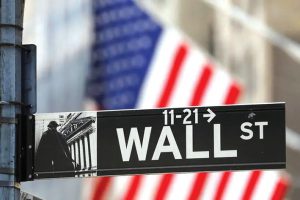BLOOMBERG
Jarred by daily double-digit moves in Treasury yields, bond investors are bracing for at least another year of rocky trading, abandoning hopes that in 2023 the market would return to normality.
That’s forcing them to ditch their old playbooks designed during calmer and more predictable times and look for flexible and nimble investments to ride the most-turbulent market since 2008.
Traders got another taste of the contrasting forces battering the market with bonds falling after a surprise cut to global oil production, only to bounce back hours later following weak economic data. That tone continued to prevail after a softer reading on US job openings sent the two-year yield slumping sharply below 4%.
Trading in this environment requires more agility and a willingness to step in and opportunistically buy or sell when yields swing to extremes. It won’t be until the Fed ends its tightening cycle and the economic picture gets clearer that the market regains a more sustainable sense of calm, according to George Goncalves, head of macro strategy at Mufg.
With so much to digest in such a short period of time, the first quarter felt like a full year of drama for investors in the $24 trillion US Treasury market. Recession fears in the initial weeks of 2023 moderated to hopes of a soft-landing, before morphing into the prospect of no-landing in February after stronger-than-forecast jobs and inflation readings fuelled bets on higher rates. By early March, the two-year yield soared to as high as 5.08% — climbing over 100 basis points from its mid-January trough.
The rip higher in Treasury rates was turbocharged when Fed Chair Jerome Powell indicated a willingness to accelerate the pace of monetary tightening — only for the failure of Silicon Valley Bank days later to ignite a brutal flight to bonds that echoed the frenzy for haven assets seen during the global financial crisis. Two-year yields plunged over 60 basis points in a single session, finally bottoming out at 3.55%.
Bond veteran Vineer Bhansali, founder of LongTail Alpha LLC, said that in the past 35 years he’s never seen anything like that happen with rates in those shorter maturities. And such pronounced swings are certainly weighing on his investment decisions these days.
Swap traders for their part are back to pricing in a one-in-two chance of a quarter-point rate hike in May after leaning harder in that direction at the start of the week before the jobs-opening data.
The Fed is expected to slash the funds rate to about 4.30% by year end. That’s well below the median forecast from the US officials of 5.1%.
 The Gulf Time Newspaper One of the finest business newspapers in the UAE brought to you by our professional writers and editors.
The Gulf Time Newspaper One of the finest business newspapers in the UAE brought to you by our professional writers and editors.
